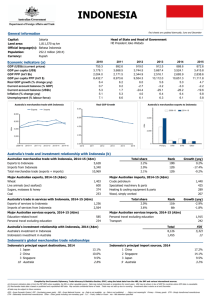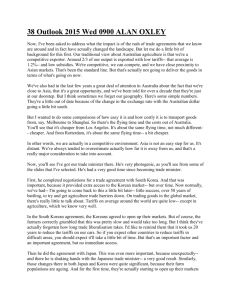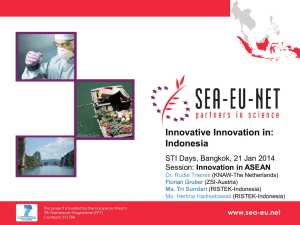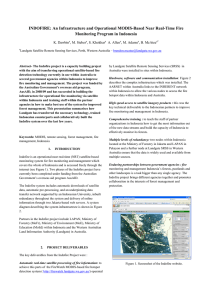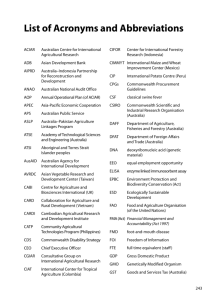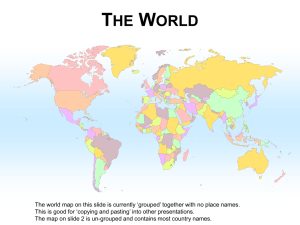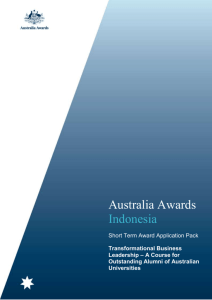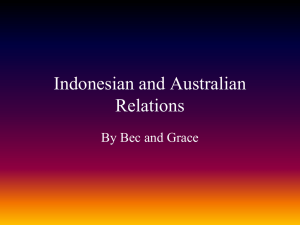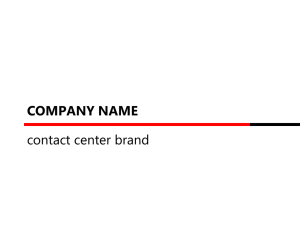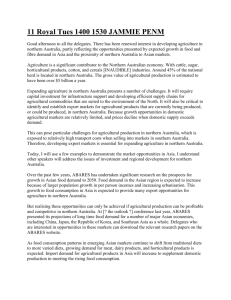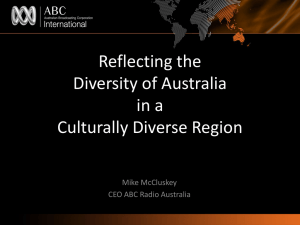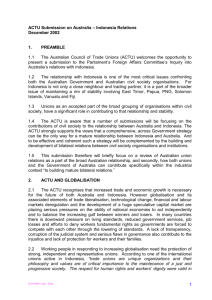Symeon Collete
advertisement
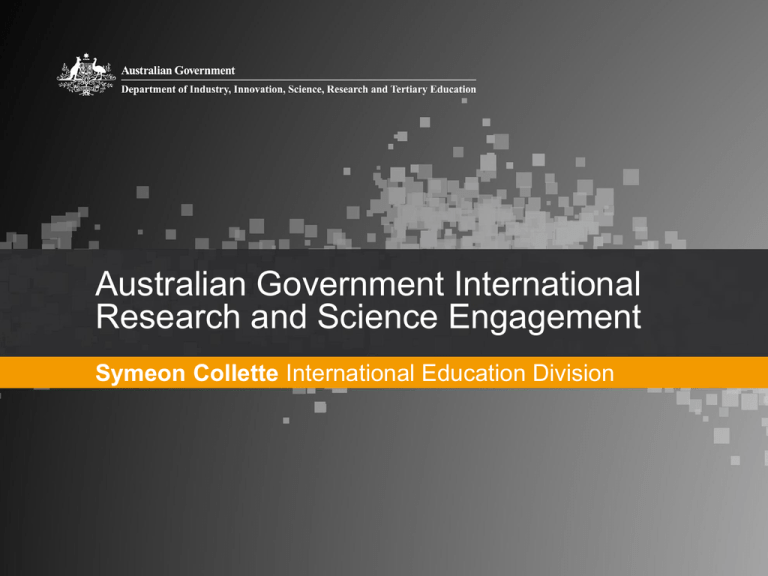
Australian Government International Research and Science Engagement Symeon Collette International Education Division Benefits of international science & research engagement Increases research capacity of a country as well as globally Provides access to global knowledge networks Increases impact of a country’s research in international arena Produces outcomes that address key global challenges that benefits both individual countries and international community Mechanisms to support international S&R cooperation Formal bilateral agreements Treaty for Cooperation on Cooperation in Scientific Research and Technology Development between Indonesian and Australian Government, 2005 Mou on Cooperation in Scientific Research and Technology Development between DIISRTE and RISTEK Several joint workshops on infectious diseases, bio-security, agriculture and food security and marine biology Key Programs Australia Awards – Australian Government Scholarships National Competitive Grant Program (NCGP) Cooperative Research Councils (CRC) Key Programs Australian Research Council (ARC) National Competitive Grant Program (NCGP) Discovery: supports investigator-initiated research and fellowships Linkage: supports research collaboration between institutions 2011: Indonesia 20th highest ranked country for collaboration under NCGP 65 incidences of collaboration Political science, Archaeology, Applied Economics, Linguistics and Environmental Science and Management US (1st)1742 incidences; China (5th) 394; Japan (7th) 285 and India(16th) 94 Key Programs continued... Cooperative Research Councils (CRC) Supports collaboration between researchers and industry, including international partners 2011 -12: 44 active CRCS in four areas: Agriculture, forestry and fishing Manufacturing Mining Services In 2009-10, reported 527 collaborations with 58 countries 6 reported collaboration with Indonesia Plant bio-security, emerging infectious disease and grain food production Indonesia Education System Third largest education system in Asia region Fourth largest education system in the world Behind only China, India & USA Education spending increased significantly Spending doubled between 2000 & 2006 Ministry of Education & Culture – Strategic Plan Increased access to education Improved education quality Better governance of the education sector G2G Higher Education relationship Education & Training relationship dating back to 1992 MoU DIISRTE - Ministry of Education & Culture MoU facilitated by annual Joint Working Group meeting. Student numbers 7th highest source of international students 5th highest in Higher Education Recent engagement Australia - Indonesia Uni Exec Knowledge Sharing Pilot Project Australia – Indonesia BRIDGE University Pilot Project Australia – Indonesia VET Mentoring Program Further information Australia Awards (Scholarships) • www.australiaawards.gov.au National Competitive Grant Program • http://www.arc.gov.au/general/international_collaboration.htm Cooperative Research Centres • https://www.crc.gov.au/Information/default.aspx



